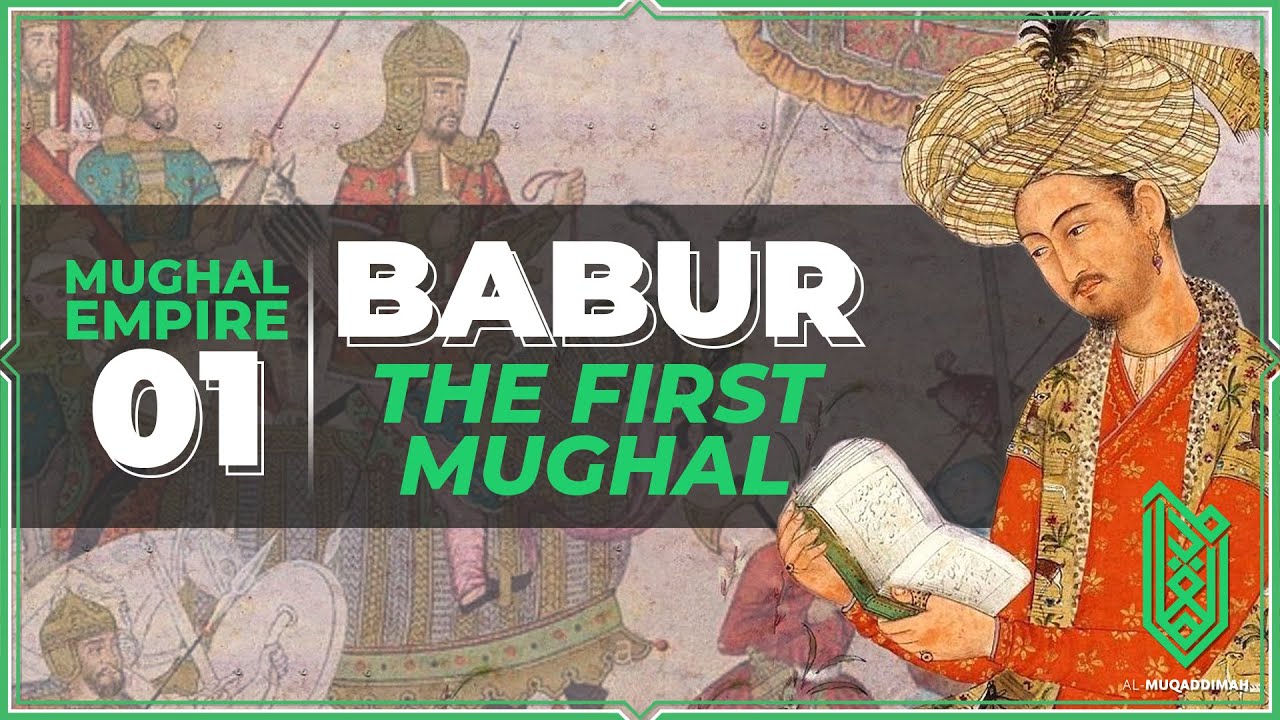DAULAH MUGHAL!! Sejarah Peradaban Daulah Islam Di India
Summary
TLDRThis video explores the rise and fall of the Mughal Empire in India, starting with its establishment by Babur in 1526. It covers key emperors like Akbar, Jahangir, Shah Jahan, and Aurangzeb, who expanded the empire and influenced Indian culture. The script also discusses the empire's decline, the impact of British rule, and the eventual end of Mughal power in India.
Takeaways
- 🕌 The video covers the rise and expansion of the Mughal Empire in India, starting from the Delhi Sultanate.
- 📜 The Mughal Empire is seen as a continuation of the Delhi Sultanate, founded by Babur in 1526.
- 👑 There were 17 rulers of the Mughal Empire, starting with Babur and ending with Bahadur Shah II.
- 🌍 The empire expanded from northern India under Babur, with significant territorial growth under Akbar and Aurangzeb.
- ⚔️ Babur first took Samarkand and Kabul before expanding into India, where he defeated Ibrahim Lodi in the Battle of Panipat in 1526.
- 🏛 Akbar, who ruled from 1556 to 1605, was one of the most influential Mughal rulers, known for consolidating power and expanding the empire.
- 🏰 Shah Jahan, famous for building the Taj Mahal and the Jama Masjid, ruled during the empire's golden age of architecture.
- ⚖️ Aurangzeb, ruling from 1658 to 1707, expanded the empire to its largest territorial extent but faced challenges consolidating Muslim rule in a predominantly Hindu region.
- 📉 The empire began to decline after Aurangzeb's death, with weaker rulers like Bahadur Shah I facing internal strife and external invasions.
- 🇬🇧 The British East India Company started gaining influence in India during the Mughal decline, and by 1857, the last Mughal ruler, Bahadur Shah II, was deposed, marking the end of the empire.
Q & A
What is the main focus of the video?
-The video focuses on the history of the Mughal Empire, its establishment, key rulers, and the expansion of the empire, particularly in India.
Who was the founder of the Mughal Empire, and when did he establish it?
-Zahiruddin Muhammad Babur was the founder of the Mughal Empire, and he established it in 1526 after defeating Ibrahim Lodi in the Battle of Panipat.
How did Babur's lineage connect him to Timur, the founder of the Timurid dynasty?
-Babur was a descendant of Timur through his father, Umar Mirza, who was a ruler of Farghana. This connection linked Babur to the prestigious Timurid lineage.
What significant military support did Babur receive that helped him expand his empire?
-Babur received military support from the Safavid Empire, which helped him in his quest to conquer Samarkand and later expand his territory into Kabul and India.
Who was Humayun, and what challenges did he face during his rule?
-Humayun was Babur's son and the second ruler of the Mughal Empire. He faced challenges from Bahadur Shah of Gujarat and Sher Shah Suri of Afghanistan, who temporarily overthrew him, forcing Humayun to seek refuge in Persia.
What role did Akbar play in the Mughal Empire, and why is he considered a significant ruler?
-Akbar, the third Mughal ruler, is considered one of the greatest emperors. He expanded the empire significantly and established strong military and administrative foundations. He is known for his religious tolerance and effective governance.
How did Aurangzeb's reign contribute to the Mughal Empire's expansion?
-Aurangzeb expanded the Mughal Empire to its greatest territorial extent, particularly into southern India. His reign is known for enforcing strict Islamic laws and his focus on consolidating power across the subcontinent.
What led to the decline of the Mughal Empire after Aurangzeb's reign?
-After Aurangzeb, the Mughal Empire experienced a decline due to weak successors, internal conflicts, and external threats, including invasions from the Afghans and the increasing influence of European powers like the British.
How did the British East India Company influence the Mughal Empire in its later years?
-The British East India Company gained increasing influence during the later Mughal period. They made treaties, including one with Emperor Akbar II, which allowed them to expand their trade and political power, eventually leading to the Mughal Empire's collapse.
Who was the last Mughal emperor, and how did his reign end?
-The last Mughal emperor was Bahadur Shah II, who reigned from 1837 to 1858. His reign ended when the British deposed him after the failed Indian Rebellion of 1857, marking the official end of the Mughal Empire.
Outlines

Esta sección está disponible solo para usuarios con suscripción. Por favor, mejora tu plan para acceder a esta parte.
Mejorar ahoraMindmap

Esta sección está disponible solo para usuarios con suscripción. Por favor, mejora tu plan para acceder a esta parte.
Mejorar ahoraKeywords

Esta sección está disponible solo para usuarios con suscripción. Por favor, mejora tu plan para acceder a esta parte.
Mejorar ahoraHighlights

Esta sección está disponible solo para usuarios con suscripción. Por favor, mejora tu plan para acceder a esta parte.
Mejorar ahoraTranscripts

Esta sección está disponible solo para usuarios con suscripción. Por favor, mejora tu plan para acceder a esta parte.
Mejorar ahoraVer Más Videos Relacionados

Bagian 1 ~ Peradaban Islam Pada Masa Daulah Mughal Di India

Mughal rule in India | 1450 - Present | World History | Khan Academy

SEJARAH BERDIRINYA DAULAH MUGHAL DI INDIA

MENGAPA MUGHAL HARUS RUNTUH? | Sejarah India dari Mughal menuju Kolonialisme Inggris - Episode 2

The History of the Mughal Empire | 1526CE - 1857CE | Al Muqaddimah

Babur, the Founder of the Mughal Empire | 1483CE - 1530CE | Al Muqaddimah
5.0 / 5 (0 votes)
